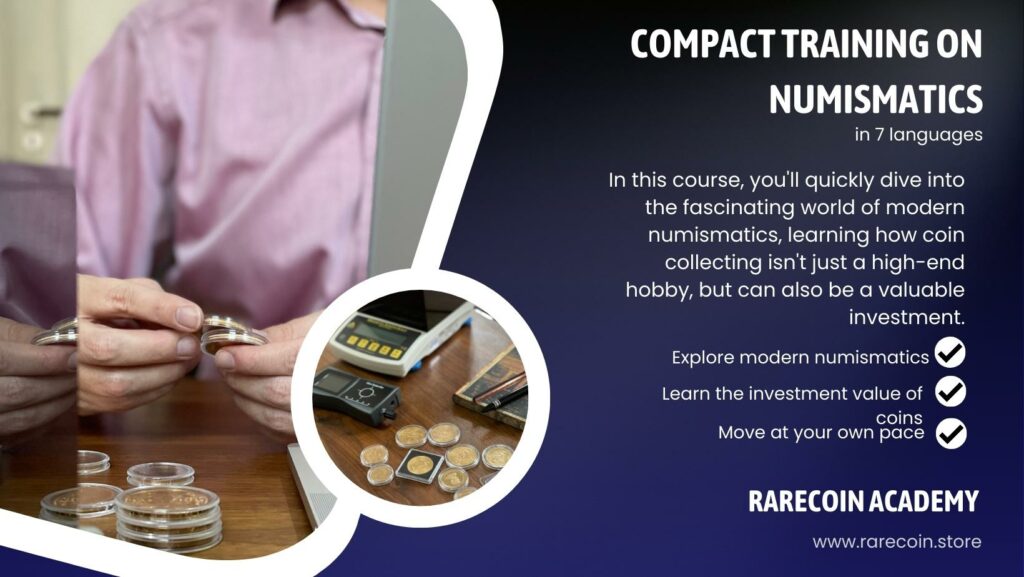
Part 4: Basics of Grading
- Why is grading so important in numismatics?
- How exactly does the Sheldon coin grading scale work?
- What information do the coin conditions convey, such as Uncirculated and Proof?
- FAQ on the topics: Basics of evaluation
Within the captivating world of modern numismatics, coin grading is an essential aspect. Collectors and investors come across a wealth of terms, grades and condition designations that can seem complex and challenging at first. But why is it like that?
On the one hand, grading not only serves to assess the condition of a coin, but it also forms a detailed language that reveals the history, quality and, in particular, the value of a coin. This system makes it easier for collectors, dealers and investors to talk about, exchange and value coins. Ultimately, the grade of a coin has a significant influence on its market value, which is why an accurate valuation is essential to ensure authenticity and fairness.
But how exactly does the rating system work?
The answer can be found in Dr. William Sheldon introduced the Sheldon coin grading scale in 1949. Originally developed for American large cents, it is now the standard measure. The scale ranges from 1 to 70: a value of 1 describes a barely identifiable coin, while values of 60 to 70 represent (almost) perfect coins. The pure numbers provide quantitative information, while additional descriptions such as Fine or Very Fine provide qualitative information about the condition.
But what exactly do the condition names tell us?
For example, Uncirculated (MS = Mint State Coins) simply means that the coin shows no signs of wear and is between MS-60 and MS-70 on the Sheldon scale. On the other hand, the term proof provides information about the manufacturing technology and not the condition of the coin. These special coins go through a special minting process and are primarily intended for collectors.
It is clear that grading, although perhaps intimidating at first, over time becomes an integral part of the numismatic adventure. Understanding and mastering this system allows collectors to not only better understand a coin’s value, but also to experience the fascinating world of numismatics in its entirety.
To sum it all up, grading is not just a method but an art that combines history, culture and craftsmanship in a common process. It provides not only practical knowledge but also an in-depth insight into the heritage and value of each coin. With this knowledge in hand, collectors and investors can broaden their horizons and discover the impressive diversity of the world of coins in all its beauty.
Further materials :
Should I have my gold coins graded / certified?
Numismatics 1×1: Immerse yourself in the world of collecting rare coins

